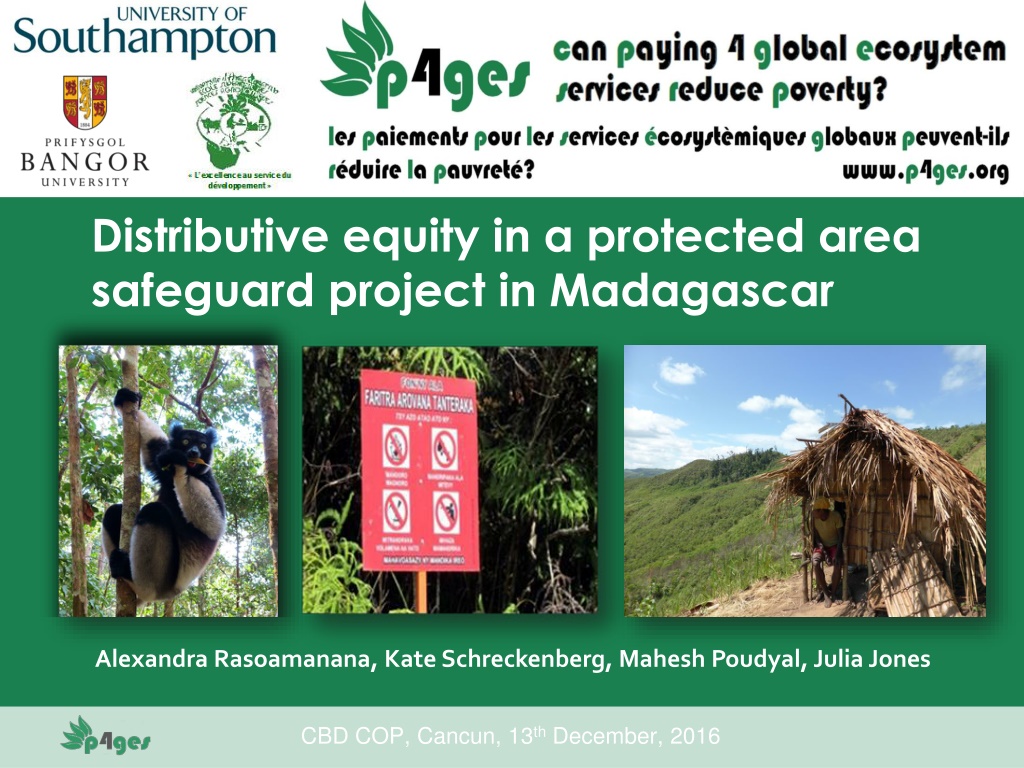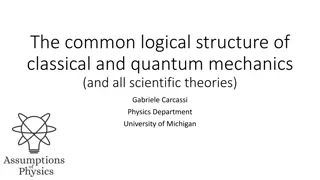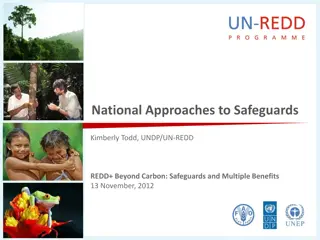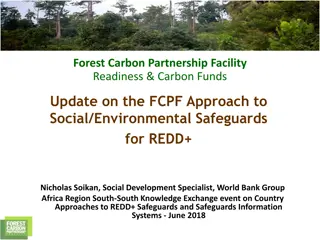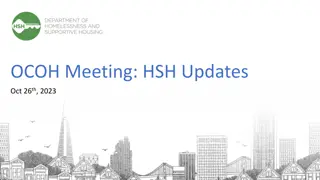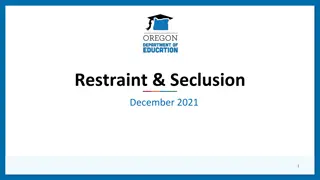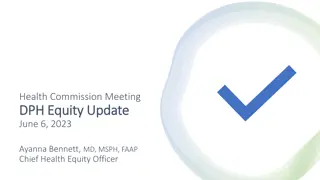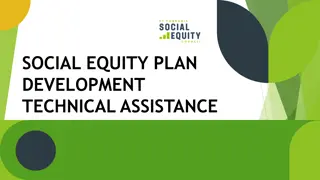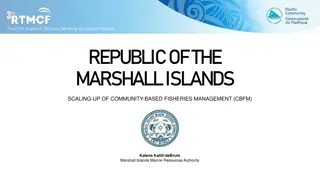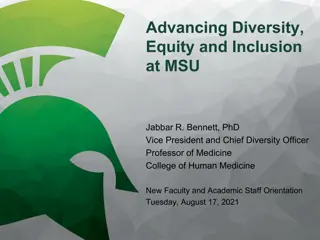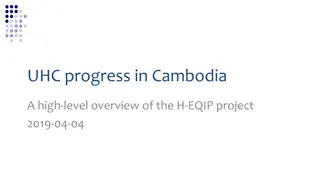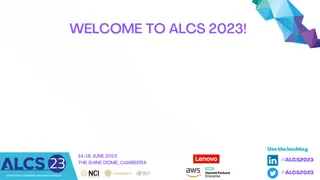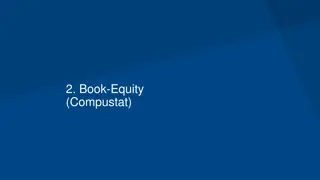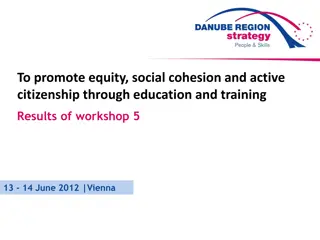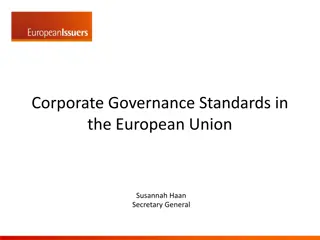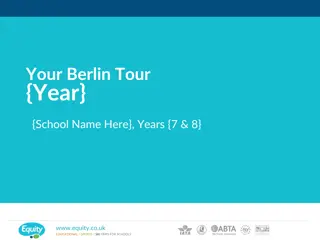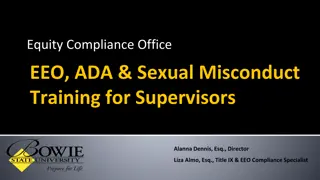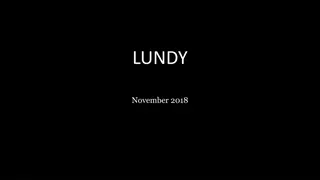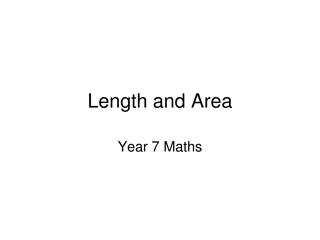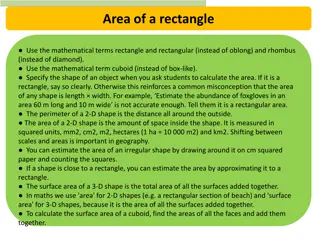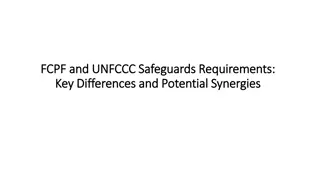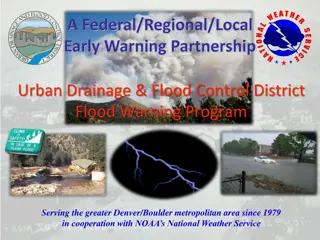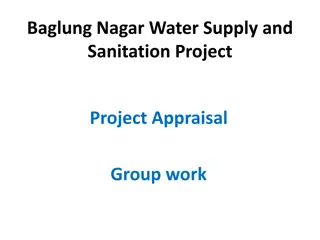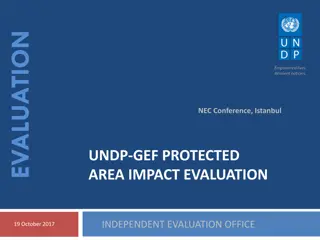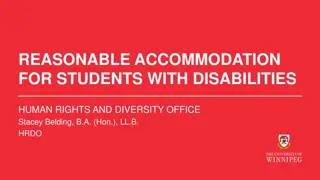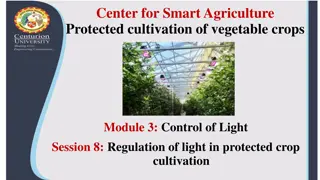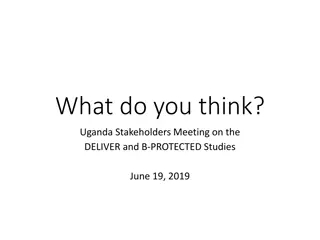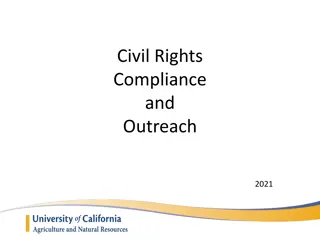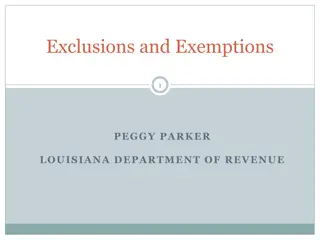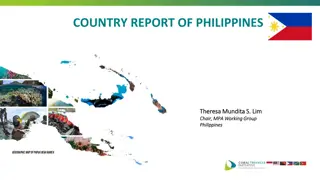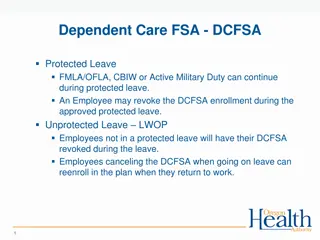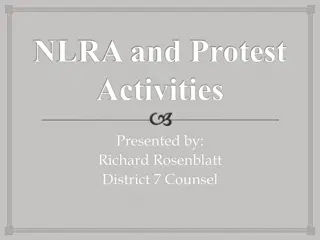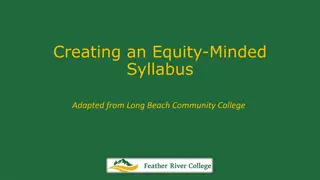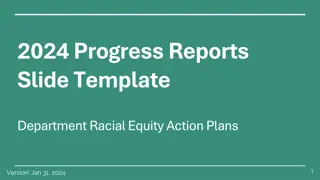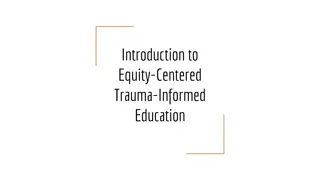Distributive Equity in Madagascar's Protected Area Safeguard Project
In Madagascar, the increase in protected areas has prompted a study on the distributive equity within the Corridor Ankeniheny-Zahamena (CAZ) project. Co-managed by Conservation International and local groups, this initiative aims to balance global benefits like biodiversity preservation and carbon reduction with local costs and compensation for affected households engaging in activities like shifting cultivation. The research investigates how well compensation covers the opportunity costs for households and the significance of CAZ in supporting local livelihoods and environmental sustainability.
Download Presentation

Please find below an Image/Link to download the presentation.
The content on the website is provided AS IS for your information and personal use only. It may not be sold, licensed, or shared on other websites without obtaining consent from the author. Download presentation by click this link. If you encounter any issues during the download, it is possible that the publisher has removed the file from their server.
E N D
Presentation Transcript
Distributive equity in a protected area safeguard project in Madagascar Alexandra Rasoamanana, Kate Schreckenberg, Mahesh Poudyal, Julia Jones CBD COP, Cancun, 13th December, 2016
Madagascars rapid increase in Protected Areas 2003 IUCN World Parks Congress: President of Madagascar committed to tripling the country s protected areas. High biodiversity levels and high poverty levels mean that the expansion of protected areas has received a large amount of external support. Madagascar represents a good case to explore the distribution of costs and benefits among local stakeholders in a protected area. CBD COP, Cancun, 13th December, 2016 2
Corridor Ankeniheny-Zahamena (CAZ) 371,000 ha of tropical rainforest in Eastern Madagascar CAZ was granted formal status as an IUCN Category VI protected area in April 2015 It is co-managed by: Conservation International (Park Manager) Madagascar National Parks Community forest management groups (COBAs) around the edge Long-term funding will be supported by REDD+ World Bank has supported costs of establishing the protected area CBD COP, Cancun, 13th December, 2016 3
Our research aims For this case study, we focused our research on distributive equity and the local costs and benefits resulting from the new park What global and local benefits does CAZ provide? What are the local costs of the new protected area? How are households selected for compensation? How well does compensation cover the opportunity costs of households around CAZ? CBD COP, Cancun, 13th December, 2016 4
CAZ what are the global and regional benefits? Biodiversity: Many endemic flora and fauna Over 2000 plant species 15 lemur species Carbon: About 1 million tons of CO2 emissions reduction from avoided deforestation Water: Source of many rivers supporting agriculture and downstream urban areas CBD COP, Cancun, 13th December, 2016 5
CAZ local livelihoods 60,000 people live in and around the park Tavy shifting cultivation system: Hillsides are cleared using fire Some paddy rice in the valleys Very little livestock People rely heavily on the forest: Firewood Construction timber Medicines Food (plants and bushmeat) High levels of poverty: >90% in extreme poverty Food security (2 good meals/day) typically only for 7 months Poor quality housing Lack of sanitation CBD COP, Cancun, 13th December, 2016 6
http://go.worldbank.org/WTA1ODE7T0 CAZ management wants to stop shifting cultivation, hunting and timber extraction in the park. This will affect local livelihoods The World Bank s social safeguards require that all people whose sources of income and standard of living would be negatively affected by the restrictions should be identified as people affected by the project (PAPs) The process of identifying PAPs is supposed to give special consideration to poor and vulnerable groups An assessment in 2010 identified nearly 2500hh as PAPs of whom 1835 signed letters of engagement to receive compensation Compensation was provided in the form of microprojects in 2014 CBD COP, Cancun, 13th December, 2016 7
Who was identified as a PAP? Methods We worked in one safeguard site (Ampahitra) in the south-west of CAZ We collected a list of all households (417) scattered in 8 villages at the site. We randomly sampled 203 hh We used a structured survey questionnaire to collect data on demographic characteristics and livelihood activities, and asked whether the hh had been identified as a PAP CBD COP, Cancun, 13th December, 2016 8
Who was identified as a PAP? Results 141 hh had been in the area in 2010 only 36 of these were identified as PAPs. Key factors which influence the likelihood of being identified as a PAP were: Having a household member in the COBA, and preferably in a decision- making position (like chairperson or secretary) Having higher food security Living closer to a motorable road CBD COP, Cancun, 13th December, 2016 9
Impacts of Access, Food Security, and COBA Membership on PAP Identification HHs with decision-making member (in COBA), high food security & close to access point are >20 x more likely to be identified as PAPs compared to those without membership, low food security & far from access point CBD COP, Cancun, 13th December, 2016 10
Many households (and an entire community) were not identified as beneficiaries of the safeguard project Outside PA boundary Inside CAZ boundary CBD COP, Cancun, 13th December, 2016 11
Estimated opportunity costs vs total household income Safeguards assessment: loss/hh ~ US $120/year Median NPV of Opportunity Costs Estimated: US $2500 /hh Around 1800 households identified to receive compensation Our Estimation (r: 5%, t: 60 years,) loss/hh ~ US $180/year Only 853 households (<50%) have actually received compensation (WB 2015) Only 50% of the potentially eligible households in/around CAZ protected area officially identified for safeguards compensation Less than 25% of the potentially eligible households have received compensation CBD COP, Cancun, 13th December, 2016 12
Local costs of conservation are significant: US $2500 x 3000-4000 HHs = about US$ 7- 10million Compensation is inadequate: US $120 x 1800 HHs = < US$ 0.25 million CBD COP, Cancun, 13th December, 2016 13
Recognition: Who is recognised as being affected by the protected area? Several villages are inside the park Recognised by development actors, like the commune and CISCO (primary schools) Not recognised by environmental actors like park management Not formally eligible for compensation initiatives Not properly included in any discussions about park management CBD COP, Cancun, 13th December, 2016 14
Procedural equity The safeguard assessment process showed systematic bias (Poudyal et al. 2016), due to local elite capture assessors targeting easily accessible areas poor information on local communities Process for discussing level and type of compensation was not considered fair Very few compensation options were on offer (e.g. rice or bean farming techniques, beekeeping, poultry, fish ponds) which some people felt did not respond to their real needs . but if you are offered a gift you don't refuse it . CBD COP, Cancun, 13th December, 2016 15
Conclusions Protected areas like CAZ provide great global benefits. But they can impose high costs on local people. Social safeguards are an important means of compensating people affected by protected areas. A greater emphasis on recognition and effective procedural equity could ensure fairer distributive outcomes. CBD COP, Cancun, 13th December, 2016 16
Thank you! Further Information p4ges.org @P4GES M. Poudyal, B.S. Ramamonjisoa, N. Hockley, O.S. Rakotonarivo, J.M. Gibbons, R. Mandimbiniaina, A. Rasoamanana, J.P.G. Jones (2016) "Can REDD+ social safeguards reach the right people? Lessons from Madagascar", Global Environmental Change 37: 31-42. M. Poudyal, B.S. Ramamonjisoa, O.S. Rakotonarivo, N.S. Andrianantenaina, N. Hockley, J.M. Gibbons, R. Mandimbiniaina, A. Rasoamanana, J.P.G. Jones (in Prep.) Who bears the cost of forest conservation? CBD COP, Cancun, 13th December, 2016 17
